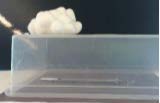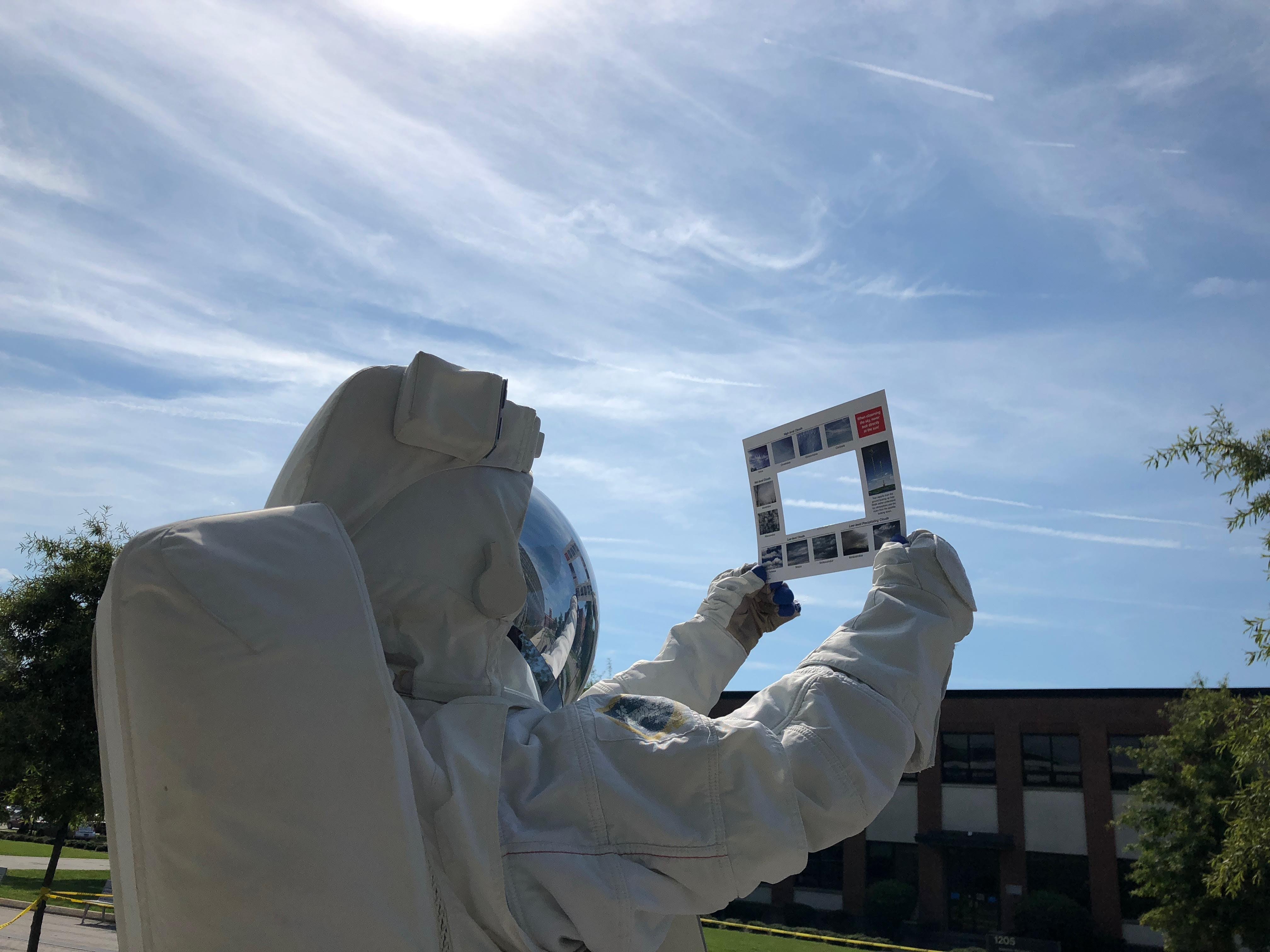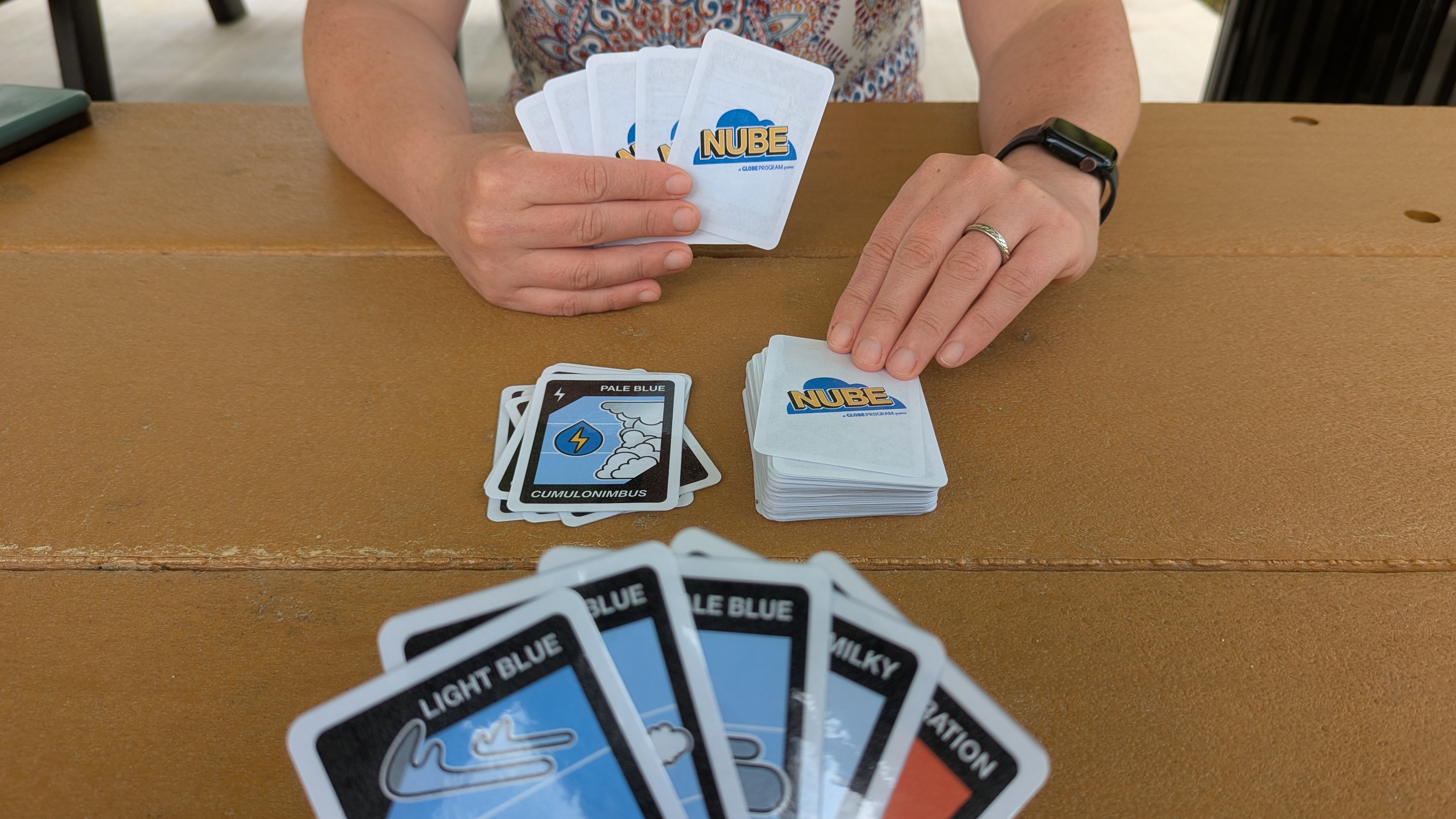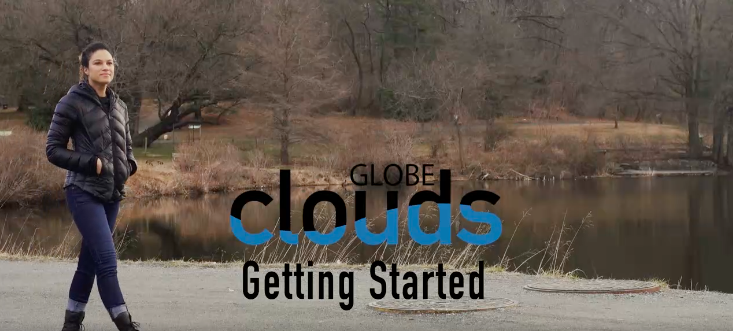Clouds Resource Library - GLOBE Observer
Clouds Resource Library
Cloud Clues - Determining a Cloud's Opacity
Categorize various materials by opacity and understand why cloud opacity matters. Add a light sensor to measure how much light passes through the materials.
Create a cloud collage and ask your friends to guess the percentage of cloud cover. Expand or adapt this activity by printing photos of the sky and asking participants to identify the cloud coverage.
See a video demonstration of Estimating Cloud Cover as a family activity (YouTube)
Create a cloud using rubbing alcohol and an air pump and investigate it using a laser.
You can also do this demonstration using water, ice and a match.
Clouds or Snow: A Satellite Mystery
This issue of Earth Observatory for Kids explains how clouds and snow can look the same from a distance, and how satellites can tell the difference by measuring light that humans cannot see. The accompanying activity is "Make Your Own Cloud (In a Bottle)"
Watch a video demonstration of the cloud in a bottle activity.
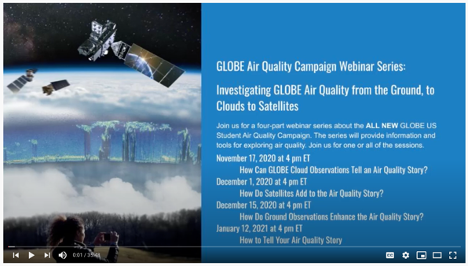
This four-part Air Quality Campaign Webinar Series, “Investigating GLOBE Air Quality from the Ground, to Clouds to Satellites,” originally presented November 2020-January 2021, provides information and tools for exploring air quality. Led by the GLOBE Clouds team at NASA Langley Research Center, it also includes presentations by various scientists and researchers on air quality topics.
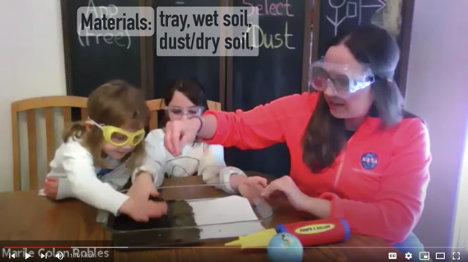
Build a Dust Storm in a Tray Activity Demo
[8:03] Dust storms take place in many locations around the world and can be quite dangerous. In this video you will learn more about dust storms with atmospheric scientist Marilé Colón Robles, and you also will learn how you can safely observe them as a citizen scientist.
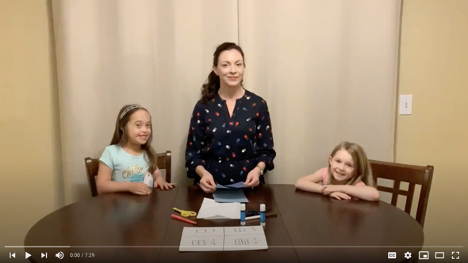
Cloud Cover Estimation Activity Demo
[7:29] Jessica Taylor of NASA Langley Research Center and her two daughters show you how to do a Cloud Cover Estimation activity using simple materials. Supplies you need are paper (white and blue), scissors, glue or tape, and a marker or pencil.
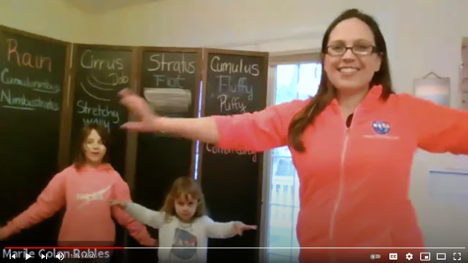
[6:50] Marilé Colón Robles, the project scientist for GLOBE Clouds at NASA's Langley Research Center, and her daughters demonstrate some of their favorite activities related to cloud types: the cloud dance, cloud triangle, and cloud journal.
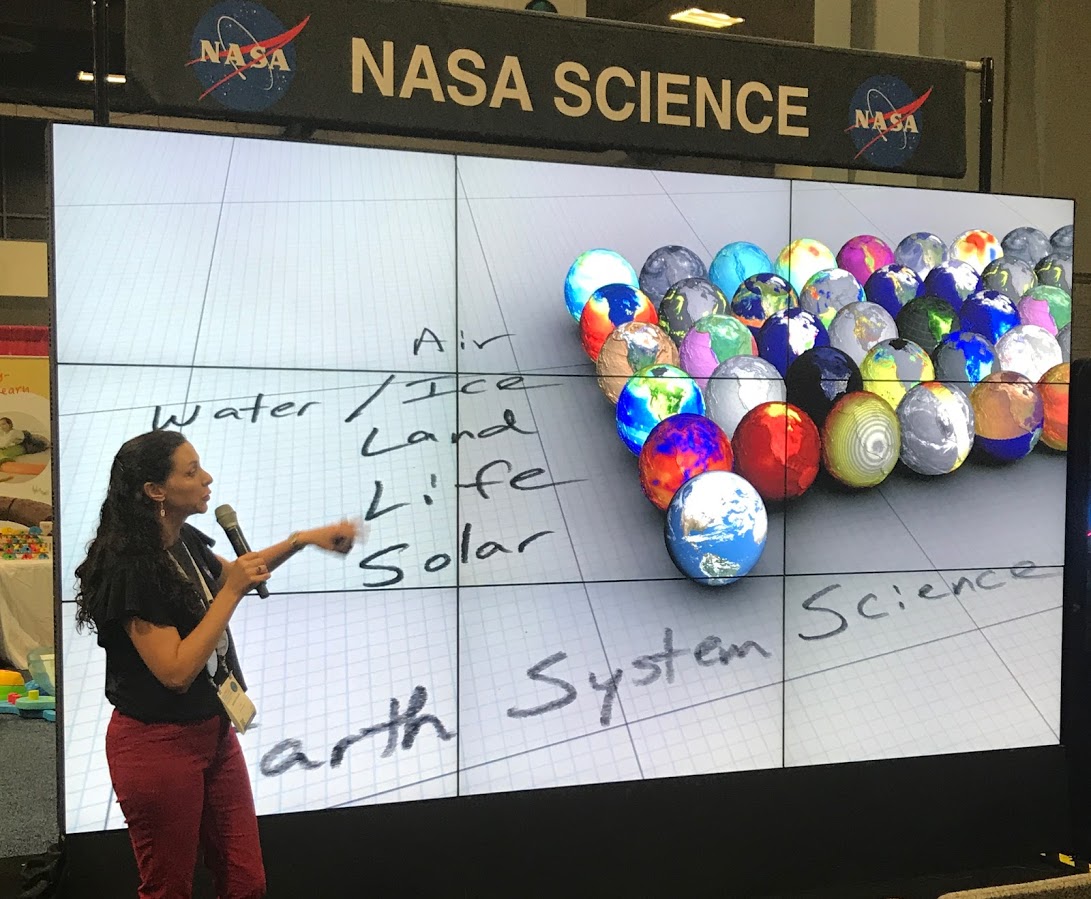
A playlist of five videos with experts explaining the science of clouds and the connections to citizen science, including Jessica Taylor, principal investigator for GLOBE Clouds, on "What is Citizen Science?" [4:08], Dr. Kristopher Bedka on "Clouds and Weather" [9:48], Dr. Patrick Taylor on "Clouds and Earth's Climate" [7:44], Dr. Kristina Pistone on "Clouds and Aerosols [5:24], Dr. J. Brant Dodson on "Clouds Research and Citizen Science" [7:40], and Dr. Bill Smith on “The Solar Terminator Problem” [8:16].
Correlation Between GLOBE Citizen Science and NASA Satellite Observations
[1:49] In this animation, data from Aqua, CALIPSO, CloudSat and GLOBE Observer are combined to show how multiple observations reveal the structure of clouds.
NASA Behind the Science: Dr. Yolanda Shea
[9:59] Dr. Yolanda Shea shares how watching the weather forecast led her to a career as a NASA scientist. Dr. Shea uses remote sensing to study the role of clouds in Earth's climate.
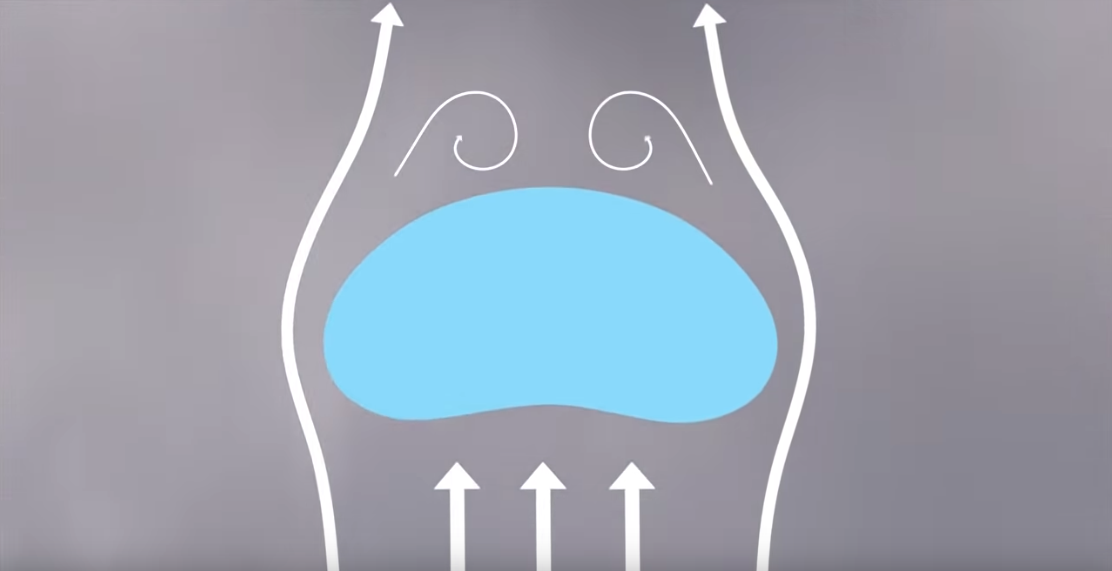
Use these videos from the Global Precipitation Measurement mission to make connections between clouds and precipitation. "Anatomy of a Raindrop" talks about the shape of a raindrop and why it is important for satellites like GPM to be able to measure the size of a raindrop, "For Good Measure" provides examples of how rain affects our lives and explains how NASA uses satellites to study precipitation, and "Show Me the Water" breaks down how much of Earth's water is usable and why studying precipitation is important for preparing for extreme weather, like flooding or drought.
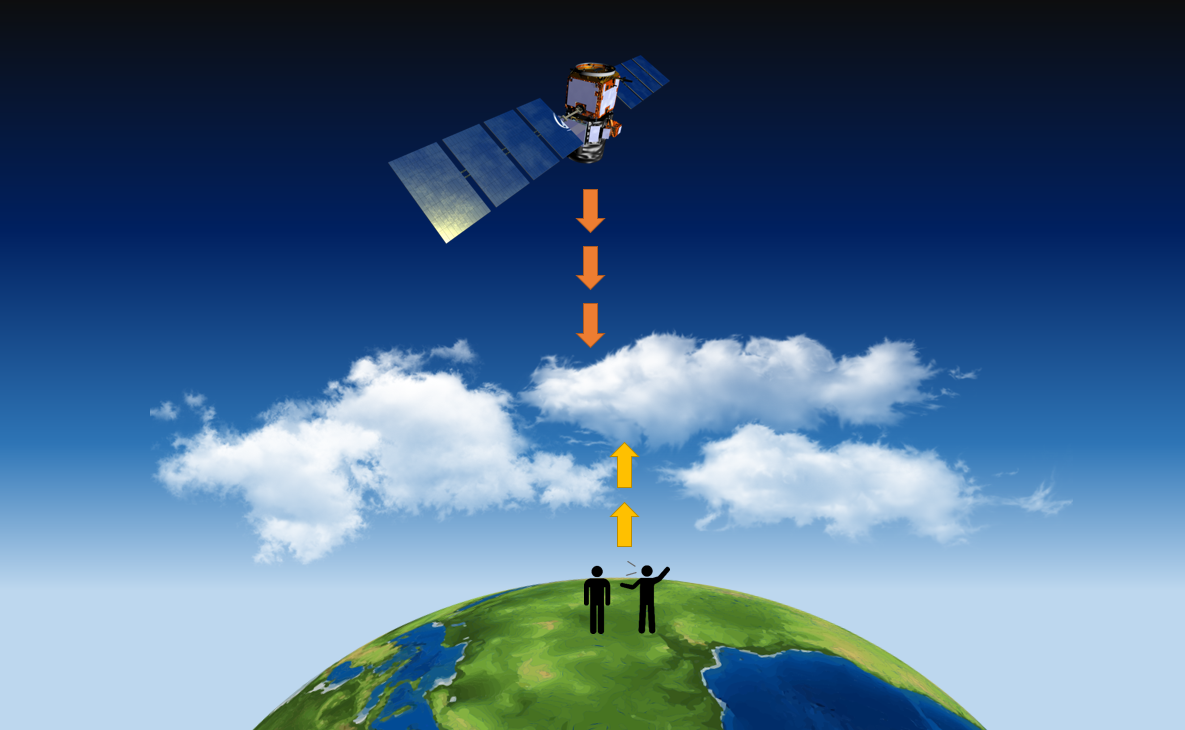
[12:13] Marilé Colón Robles (GLOBE Clouds project scientist, NASA Langley Research Center) and Tina Rogerson (scientific programmer and GLOBE Clouds data manager, NASA Langley Research Center) share why satellite matches to GLOBE cloud observations are important and how they are done. Then, Heather Mortimer (GLOBE Observer graphic designer and science writer, NASA Goddard Space Flight Center) walks us through her own cloud observations and satellite matches.
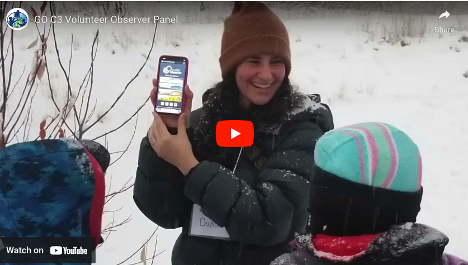
Volunteer Scientist Panel Video
[11:10] A video showcasing stories from GLOBE volunteers about how they got started with GLOBE and the GLOBE Observer app, and connections they have made to research and to using GLOBE in their communities. This was originally shown as part of the GLOBE Observer Connection-Conversation-Celebration (C3) event held on 26 July 2022.
Books

Use WorldCat to search libraries near you, read reviews, and find editions in different languages.
Clouds Books for Teens and Adults
Cloud Cover Estimation - Interactive
This interactive web-based tool allows you to calibrate your eye by practicing cloud cover estimation using images on the computer.
Cloud Type Practice - Interactive
This interactive web-based tool asks a series of questions to help you narrow down the type of cloud you are observing. It can be used both for practice and in the field to identify clouds. Based on the original Cloud Identification Key developed by Dr. Tina Cartwright, Marshall University, West Virginia
Contrail Formation Tutorial - Interactive
In this tutorial, you can explore the physics of contrail formation in the atmosphere and develop the ability to recognize the several types of contrails that form under varying atmospheric conditions. Practice classifying the type and abundance of contrails. (Requires Flash)














